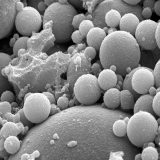According to officials at the Centers for Disease Control (CDC), just about every surface inside a truck’s cab, even the door handles and glad-hands, can transmit the COVID-19 virus. Even though CDC stresses that physical contact with surfaces is not considered the primary line of transmission, it can’t hurt to be cautions and wash hands frequently, health experts advise.
How to Keep the Cab Clean
Before starting a shift, experts recommend drivers wipe down all the surfaces they’re likely to touch with an appropriate cleaning product or hot soapy water. It may take an extra 10 minutes, but operators will make that up with the lack of traffic clogging the highways.
Surfaces include the steering wheel, gear shift or selector, all driver switches and controls as well as door handles (interior and exterior) and glass. Surfaces in the sleeper should be wiped down as well. too.
In addition, bedding and linens should be laundered regularly. CDC recommends using hot water and advises against shaking dirty laundry so as to avoid dispersing the virus through the air. Launder the laundry bag as well or dispose of any garbage bags used to store dirty laundry.
For electronics such as tablets, touch screens, keyboards, etc., drivers should remove any visible contamination following the manufacturer’s instructions. If no manufacturer guidance is available, consider the use of alcohol-based wipes or sprays containing at least 70 percent alcohol to disinfect touch screens. To prevent damage, do not spray liquids directly on to the device and do not immerse them in cleaning solutions.
For Technicians
CDC says it is not known how long the air inside a room (in this case, the cab of a truck) occupied by someone with confirmed COVID-19 remains potentially infectious. While it would seem unlikely that the environment in the cab would be a potential source of infection, leaving windows open prior to driving or servicing the truck might be advisable. At the very least, technicians should wear protective gloves or thoroughly wipe down surfaces that they are likely to touch while performing service on the truck, especially door handles, steering wheels, gear shifts, etc. And of course, they need to thoroughly wash their hands after the job is completed.
Enjoying our insights?
Subscribe to our newsletter to keep up with the latest industry trends and developments.
Stay Informed“They should be paying attention to the high touch points in the shop, such as telephones, touch screens, keyboards, and the like,’’ said Joe Puff, vice president of truck technology and maintenance at NationaLease. “It’s the same with trucks; the grab handles, steering wheels, and places that drivers touch all the time need to be properly wiped down as precaution. It’s doesn’t take much, and that little bit of effort can save lot of grief.’’
Recommended Cleaning Products
The Environmental Protection Agency (EPA) has published a list of disinfectants that meets its criteria for use against SARS-CoV-2, the novel coronavirus that causes the disease COVID-19. It’s a long list that includes dozens of commercial and industrial cleaning products as well as household products. These are disinfectants, as opposed to simple cleaning products. As disinfectants, there is some virus-killing capability, while common cleaning products may just transfer the virus from the surface to the rag or wipe. In either case, wipes and rags should be properly disposed of or laundered after use.
Many of the recommended products contain sodium hypochlorite, which is the main ingredient in laundry bleach. If the products listed on the EPA site are not readily available, a mixture of five tablespoons (one-third of a cup) bleach per gallon of water or four teaspoons of bleach per quart of water makes an effective substitute. It may not smell as nice as some of the store-bought products, but it will do the job.
Never mix household bleach with ammonia or any other cleanser.
Consumer products usually come ready to use, but some commercial products may have to be diluted as per the manufacturer’s instructions and allow proper ventilation during and after application. CDC recommends ensuring a contact time of at least one minute.
While effective cleaning products are hard to find, hand sanitizer is even scarcer, unless one is prepared to pay $17 per bottle to some eBay troll. CDC says alcohol-based products with concentrations of at least 60 percent to 70 percent are as effective as soap-and-water hand washing. But no one should be lulled into thinking she or he is doing the right thing using a product with lesser concentrations. It’s not as effective, CDC said.
The concentration is important. There are loads of recipes online for making alcohol-based sanitizer, but many experts advise against it. They say it turns out too diluted, in which case it would be of little value. It could also be too strong, which can lead to injuries.
Public Spaces
Assume public surfaces could be contaminated. Drivers should wipe down what surfaces they can, but that is impractical in many situations. Also, drivers should limit the time they spend in closed spaces in the company of others, and should stay at least six feet apart at all times.
The bottom line is, drivers should take precautions and wash their hands thoroughly after touching any object. They also should avoid touching their faces or putting their fingers near their mouths, noses or eyes. And if drivers need to cough or sneeze, they should cover their mouths with a handkerchief or an arm or hand, and wash up afterward, according to CDC.





















